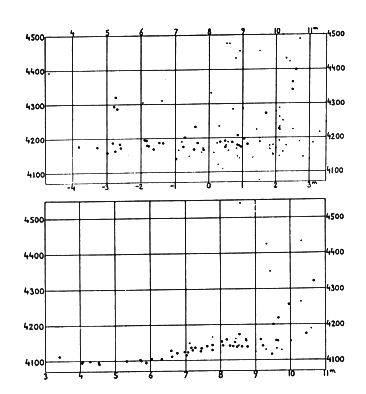Biografia di Danilo Domenici
Ejnar Hertzsprung nacque a Copenaghen l’8 ottobre 1873.
Si laureò in ingegneria chimica al Politecnico di Copenaghen nel 1898, quindi studiò fotochimica all’Università di Lipsia. Si interessò all’astronomia da suo padre, astronomo dilettante. Cominciò a frequentare l’osservatorio astronomico dell’università e a fare misure di astronomia come privato. Nel 1907 pubblicò il lavoro “Determinare la dimensione fotografica delle stelle”, in cui suppose che esista una relazione tra lo spettro elettromagnetico delle stelle e la loro luminosità o magnitudine assoluta. In particolare trovò che le ultime classi spettrali (G, K e M) si dividono in due serie, una con magnitudini molto piccole e una con magnitudini molto grandi (oggi note come “giganti rosse”).
Hertzsprung inviò una copia dell’articolo a Karl Schwarzschild, direttore dell’Osservatorio di Gottinga, che gli offrì un posto come professore nel 1908. Nel 1909 si trasferirono entrambi all’Osservatorio di Potsdam.
Nel 1910, durante un viaggio negli USA, incontrò Henry Russell, che era giunto indipendentemente ai suoi stessi risultati. Il loro lavoro fu pubblicato nel 1911 ed è noto come Diagramma di Hertzsprung-Russell, o DIagramma H-R.
Questi sono i Diagrammi H-R per le Iadi e le Pleiadi del 1911:

Sulle ordinate è riportata la lunghezza d’onda della luce in Angstrom, e sulle ascisse la magnitudine assoluta.
Nel 1913 Hertzsprung, usando la relazione tra il periodo e la luminosità delle Cefeidi, misurò per la prima volta la distanza di un oggetto esterno alla Via Lattea, la Piccola Nube di Magellano.
Dal 1919 al 1945 lavorò all’Osservatorio Universitario di Leida, del quale divenne direttore nel 1935.
Morì a Roskilde, in Danimarca, il 21 ottobre 1967.
Immagine

